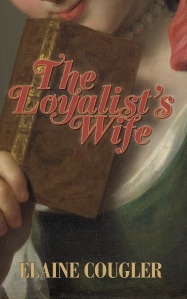 So you write a book, and it takes you a year, and you think the next step is handing it to a publisher. That’s what I thought seven years ago. And then came revision, character arcs, economy of words, and a host of other writing no-no’s and must-do’s.
So you write a book, and it takes you a year, and you think the next step is handing it to a publisher. That’s what I thought seven years ago. And then came revision, character arcs, economy of words, and a host of other writing no-no’s and must-do’s.
For five of my six years to publication, traditional publishing was absolutely the way I wanted to go. The marvellous books I’d read were published by the big houses, and I longed to follow that tradition.
Throughout all the conferences, workshops, online searches, critique groups (even one I started myself), and connections with writers, I dreamed of finding a publisher. I pitched, queried, rewrote and rewrote and rewrote. Somewhere along the way, however, I learned something else.
I could take control. I could choose to believe that my background as an English teacher and a life-long reader of excellent historical fiction, plus five years working hard on this project gave me knowledge. I took back my manuscript from the online group with whom I was so frustrated and walked away from the two editors and two agents who had expressed interest in my project.
Again and again, I rewrote my manuscript. I had beta readers and hired editors, a cover designer, an interior designer, and a printer, all with excellent recommendations and reasonably priced.
Online and print resources I’d collected over the years now paid off. If I wanted to know how to set up my copyright page, novels on my shelf could show me. If I wanted to know virtually anything about publishing and marketing a book, the Internet held a world of answers. And the professionals I’d hired had reams of helpful hints for me whenever I asked.
Throughout those first five years, my confidence increased at the same rate as my learning, and I went from keeping my writing a secret to telling the world I was a writer. Over that time, self-publishing became more and more accepted and I am proud to be one of those intrepid writers who took that route.
Here are six reasons why I chose to self-publish:
- The number of historical novels published in Canada is very low. Six a year is the number I was given.
- Authors can wait two or three years to actually hold their book in hand once they sign a contract with a traditional publisher.
- My age pushes me to move on and finish projects.
- I am a perfectionist–a characteristic that works well for producing a worthy novel.
- I am a bit of a control freak and–dare I say it–like the power.
- I have a habit of tackling new projects in a big way. I am the lady whose very first quilting project was a quilt for a king-sized bed. I love a challenge.
Meaningful marketing makes or breaks any book, and increasingly, traditionally published writers must market just as much as those who are self-published. And yet the author’s share of book sales is pitifully low. Self-published or not, we must learn to navigate our way around Twitter, Google+, LinkedIn, Goodreads, Facebook, and a host of other social media, all in hopes of increasing our sales.
To self-publish or traditionally publish: that is the question. The answer depends on each of us, but for me, setting up my own publishing company and forging ahead have been absolutely the right choice.
This article was first printed in the May-June issue of the Word Weaver, the wonderful magazine members of WCDR receive with their membership, and it is reprinted here with their permission. The Writers’ Community of Durham Region has hundreds of members and works hard to provide an amazing community of resources and events. For me, it’s worth the drive to Ajax for the monthly breakfasts and I make as many as I can.
Here is the bio printed with my article:
Elaine Cougler is a former high school teacher who taught French, English and Computer Studies at various high schools across the province. She has written two books of family memories, a cookbook, a children’s book, and The Loyalist’s Wife, a historical novel, which was published in June of 2013. Currently, she is working on the sequel, The Loyalist’s Luck, due out in September, 2014. A lover of people and especially writers, Elaine delights in speaking to groups and her teaching skills make her a natural at leading workshops on writing. On Becoming a Wordsmith is Elaine’s writing blog where she blogs about the journey to publication and beyond.
For All Lovers of Historical Fiction
Available Now: The Loyalist’s Wife, the first book in The Loyalist Trilogy!
by Elaine Cougler, winner of the WCDR 2014 Pay It Forward Scholarship
When American colonists resort to war against Britain and her colonial attitudes, a young couple caught in the crossfire must find a way to survive. Pioneers in the wilds of New York State, John and Lucy face a bitter separation and the fear of losing everything, even their lives, when he joins Butler’s Rangers to fight for the King and leaves her to care for their isolated farm. As the war in the Americas ramps up, ruffians roam the colonies looking to snap up Loyalist land. Alone, pregnant, and fearing John is dead, Lucy must fight with every weapon she has.
With vivid scenes of desperation, heroism, and personal angst, Elaine Cougler takes us back to the beginnings of one great country and the planting of Loyalist seeds for another. The Loyalist’s Wife transcends the fighting between nations to show us the individual cost of such battles.
Purchase The Loyalist’s Wife on Amazon here.

Those are perfectly fine reasons to self-publish! It sounds a little depressing to me, as an aspiring writer, but I guess it is the truth that it would be a shame if we kept searching for a publisher for years without ever finding one… and then just to throw away the manuscript. Something needs to happen to it. In that case, self-publishing sounds like a great idea.
LikeLike
Keep working, agrrosewood, and you’ll soon move beyond that “aspiring” tag to published. Thanks so much for your comment here on my blog.
LikeLike
Hi Elaine! I’m glad you chose to self-publish, it means your books come out pretty close together. Not sure that would have happened with a traditional publisher. I, too, thought I would go the traditional route, but after experiencing small-press with my first three novellas, I’m totally enjoying self-pubbing my longer novels. Even if sometimes I wish for that entity to hold my hand. 🙂
LikeLike
Yes, there are good and bad points no matter which way we go. I think keeping an open mind is pretty important in this writing market these days. Thanks for visiting, Jessica!
LikeLike
Hi Elaine! You forgot to mention another perck of self-publishing: you get to keep control of the book cover design… You get a book cover designer working exclusively for you and you have the power to choose your own book cover, a joy that traditional publishers never share with their authors… 🙂
LikeLike
Yes, you do, Beautebook! And that’s wonderful if you hire great people and learn how to choose a cover. I am indebted to my writer friend, Robyn Marie Butt, who taught me a lot about the job of covers. And to my cover designer whom I met through my printer. She is a dream.
LikeLike
I’m getting ready to straddle or jump all the way across the line between traditionally & self-published. The points you make are right on, Elaine. With traditional publishing, you have help with edits, don’t have to format, design a cover or get the book in print, but you do lose control. I’ve never liked my cover for my 2nd book Rhapsody and every time I mention this, people say yep, that’s a terrible cover and doesn’t reflect the story at all. No one has ever said, they like it and that’s to me detrimental to sales.
LikeLike
That’s so interesting, Sharon. The cover means so much. When I’m out speaking to groups and they see the lovely cover and the overall quality of the book, they reach for their wallets. And even if they don’t, I’m pleased with the product. I like to be happy with it. Of course, I have things I’m not pleased about but those are things I wish I’d done better and I’ve trained myself not to mention them. (a hard task!) Also selling something so totally mine is much easier, I think.
I’ll be excited to see your next project, Sharon, whichever way you choose to publish!
LikeLike
You have definitely motivated me to self-publish my book which I am still writing.
LikeLike
Yay! Good Luck, Sanchita!
LikeLike